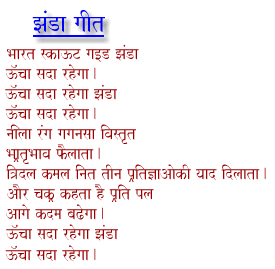LASHINGS FOR DWITIYA SOPAN
LASHINGS FOR DWITIYA SOPAN



SHEAR LASHING:
Use: The Shear Lashing (ABOK # 2108 - 2110, p 342.) is used to lash the ends of two poles together. The other ends are separated to make a pair of Shear Legs.
Spelling: This Lashing is widely spelled both "Shear" and "Sheer". There seems to be little agreement and some writers use both on the same page. "Shear" was selected here because it was Ashley's choice.
Tying it: The two poles are laid side-by-side and an initial Clove Hitch is tied round one pole. A Round Lashing is then tied around the two poles near one end. Then two or three Frapping turns are tied binding the lashing turns tightly. Starting these turns can be awkward. It is sometimes necessary to spread the legs apart to open up the poles to make it possible. The Lashing is completed with another Clove Hitch. The other ends of the poles are then separated to make a pair of Shear Legs.
Use: Shear legs support weight. A single pair can be controlled with a rope as they lean over a stream to lift a bucket. A series of them can support an aerial walkway.
Frapping Turns: The turns surrounding the lashing at right angles exert a tightening effect on the lashing. These turns are known as Frapping Turns. Pulling them as tight as possible makes the Lashing more secure. Various techniques are recommended, but I'm indebted to Dana Holgate for the following: wrap the rope around a stick, stand on the pole, bend your knees, hold the stick across your thighs and then pull by straightening your legs.
SQUARE LASHING:
Use: The Square Lashing (ABOK # 2114, p 343.) is used to bind two poles together. The lashing is designed to be load bearing and can be used to create scaffolding. Although the two poles usually cross each other at 90 degrees, the Square Lashing may be used when the angle between the two poles is as little as 45 degrees,
Scouting: Square lashings can be used to make a rectangular frame as shown here. Many applications have been described including: making support frames; when two trees are close enough, a table can be supported by a pair of poles or branches lashed horizontally either side of the trees; a fence can be constructed by driving poles into the ground and then joining them with bars attached with Square Lashings; and a raft can be created by lashing bamboo poles across each other.
Tying it: The animation shows the preferred method of making this lashing. Turns are added internally around one pole and externally around the other. Here, each extra turn is added inside the previous one on the horizontal pole but outside the previous one on the vertical pole. This presents a flat array of turns to be surrounded by the Frapping Turns – and each turn will be subject to tightening.
Frapping Turns: The turns surrounding the lashing at right angles exert a tightening effect on the lashing. These turns are known as Frapping Turns. Pulling them as tight as possible makes the Lashing more secure. Various techniques are recommended, but I'm indebted to Dana Holgate for the following: wrap the rope around a stick, stand on the pole, bend your knees, hold the stick across your thighs and then pull by straightening your legs.
Alternative Finish: The final half hitches may be located on top of the Frapping Turns, i.e., add two more Frapping Turns in the form of Half Hitches.
DIAGONAL LASHING:
Use: The Diagonal Lashing (ABOK # 2115, p 343.) is used to lash two spars together. Unlike the Square lashing which works for right angle crossings, the diagonal lashing secures poles crossing each other at a variety of angles.
Tying it: An initial Timber Hitch surrounds both poles. The choice of a timber hitch is important. Sometimes there is a gap between the poles. Pulling on the Timber Hitch closes the gap and allows the lashing to proceed with poles touching. A clove hitch around one pole could not be used to pull the poles together and might come untied.
Use: As shown here, the diagonal lashing is used to join two diagonal poles that are being used to brace a rectangular frame. The location of one diagonal in front and one behind explains the gap between the poles commonly found in the center.
Options: The animation shows the lashing made on poles that happen to be at right angles. Under such circumstances a Square Lashing might be as effective. However, when the angle between the poles is closer to 45 degrees, the diagonal lashing is more appropriate.
Frapping Turns: The turns surrounding the lashing at right angles exert a tightening effect on the lashing. These turns are known as Frapping Turns. Pulling them as tight as possible makes the Lashing more secure. Various techniques are recommended, but I'm indebted to Dana Holgate for the following: wrap the rope around a stick, stand on the pole, bend your knees, hold the stick across your thighs and then pull by straightening your legs.

Comments
Post a Comment